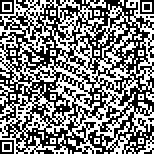王亚男,石秉霞,郭云良,裴海涛,纪晓军.运动训练对大鼠脑缺血再灌注后肢体功能恢复及微管相关蛋白含量的影响[J].中华物理医学与康复杂志,2004,(1):
扫码阅读全文

|
| 运动训练对大鼠脑缺血再灌注后肢体功能恢复及微管相关蛋白含量的影响 |
|
| |
| DOI: |
| 中文关键词: 脑缺血 大鼠 运动 康复 MAP-2 |
| 英文关键词: Cerebral ischemia Rat Exercise training Rehabilitation MAP-2 |
| 基金项目:青岛市科技局资助课题(No.SG99-403),山东省卫生厅资助课题(No.JZ05) |
|
| 摘要点击次数: 3691 |
| 全文下载次数: 4554 |
| 中文摘要: |
| 目的研究运动训练对局部脑缺血再灌注大鼠的肢体功能恢复是否具有促进作用,并同时从分子角度探讨其相关机制。 方法将大鼠随机分为运动组、对照组、假手术组及正常对照组,采用线栓法制作Wistar大鼠大脑中动脉闭塞(middle cerebral artery occlusion,MCAO)再灌注模型。运动组大鼠术后每天进行游泳训练,采用前肢放置实验及平衡实验观察各组大鼠肢体功能恢复情况,并同时采用免疫组化法观察脑缺血周边区微管相关蛋白-2(MAP-2)的免疫活性强度。 结果大鼠局部脑缺血再灌注后,运动组大鼠前肢放置实验评分及平衡实验评分均优于对照组,运动组大鼠前肢放置实验评分在术后第9,11,13,15,17,19,21,23及25天时,较对照组差异均有极显著性意义(P均<0.01);平衡实验评分在第7,9,11,13,17及19天时较对照组差异均有显著性意义(P<0.01或0.05);运动组大鼠皮层缺血周边区MAP-2表达水平亦高于对照组,在术后第14,28天时较对照组差异具有显著性意义(P均<0.05)。 结论运动训练能促进缺血再灌注大鼠的肢体功能恢复,其相关机制可能与上调缺血周边区MAP-2的表达有关。 |
| 英文摘要: |
| Objective To study if exercise training can promote the functional recovery of extremities in rats with focal cerebral ischemia-reperfusion, and explore the relevant mechanism with a molecular perspective. MethodsFifty-two rats were recruited in this study and randomly divided into 4 groups: an exercise group, a control group, a sham operation group and a healthy control group. The middle cerebral artery occlusion-reperfusion (MCAO-R) model was established by use of Zea-Longa's method in rats. The rats of the exercise group were administered with swimming training daily after the operation. The sensorimotor functional recovery was evaluated by behavioral test involving the forelimb movement of the rat and the balance test. Meanwhile, immunoreaction activity of microtubule associated protein 2 (MAP 2) in the surrounding area of cerebral ischemia tissue in each group were measured by use of immunohistochemical method. ResultsAfter focal cerebral ischemia-reperfusion in rats, the scores of behavioral test and the balance test in the exercise group are higher than those in the control group. Significant difference was revealed between the scores of the behavioral test in two groups at 9, 11, 13, 15, 17, 19, 21, 23, 25 days after operation (P<0.01), as well as those of the balance test in two groups at 7, 9, 11, 13, 17, 19 days (P<0.01). Concentration of MAP 2 in surrounding area of ischemic cerebral tissue in the exercise group was higher than that in the control group, significant difference was revealed at 14, 28 days after operations (P<0.05). Conclusion Exercise training may improve the functional recovery of extremities in rats with cerebral ischemia-reperfusion, and the mechanism was related to the upregulative expression of MAP-2 in the surrounding area of the ischemic brain tissue. |
|
查看全文
查看/发表评论 下载PDF阅读器 |
| 关闭 |